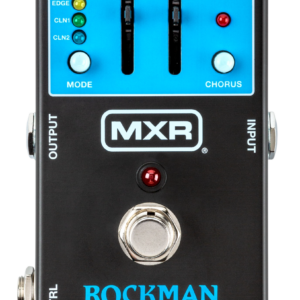Description
The MXR 5150 Overdrive EVH Signature Drive Pedal is currently retailing at £229 and it is in stock. Available to be delivered to you by post direct (some charge may apply).The team at Just Pedals think that MXR nailed it with the MXR 5150 Overdrive EVH Signature Drive Pedal.
If you are a hard rock or metal guitar player you have probably thought about owning an EVH 5150 amp at some point. Its heavily saturated high gain tone matched up with its tight low end and fast attack made it one of the best amp choices for a lot of players across the globe.
MXR know that you don’t want to get rid of your current amp though so they have worked closely with Eddie Van Halen and the team at EVH to recreate the amps tone in a single MOSFET pedal.
Amp Like Response
You have probably heard this a thousand times. While some pedals get somewhere near the sound of an amp the MXR 5150 really sounds like you have a 5150 on stage. The key is in the MOSFET transistor based circuit. While we could get really nerdy about this MOSFET transistors basically respond like valves.
This means the same high gain saturated tone that you have heard on countless records sits inside this little pedal.
Keeping It Tight
There is much more to this pedal than its amp like response though. With a 3 band EQ, Boost switch with added compression and a built in noise gate you can make your tone incredibly tight even when running through a small clean amp.
The noise gate is one of the biggest features with this pedal as it means you really can just rock up to a gig with this pedal and get a tight sound through any amp. Based on the MXR Smart Gate circuit you can even get a little bit djenty.
Here’s what MXR Say about the 5150 Overdrive
EVH 5150 Overdrive joins hand-adjusted multi-stage MOSFETs with a full complement of controls to deliver overdriven tube-like tones and exceptional sonic flexibility through a wide variety of amps and speaker cabinets.
Whether on stage or in the studio, the EVH 5150 Overdrive’s controls dial up the whole spectrum-from Eddie’s groundbreaking early classic tones to the high gain, super-articulate sound he uses today.
Features
- Designed in close collaboration with Eddie Van Halen
- Infuses any rig with legendary EVH tones
- Features a passive 3-band EQ section for versatile tweakability
- Boost switch adds extra gain and compression
- Built in Smart gate circuit























